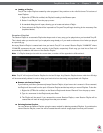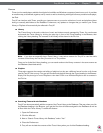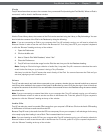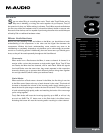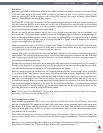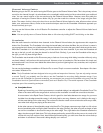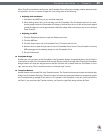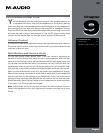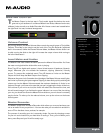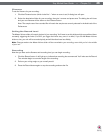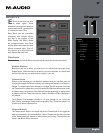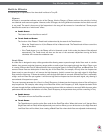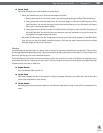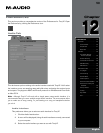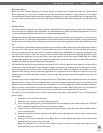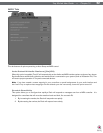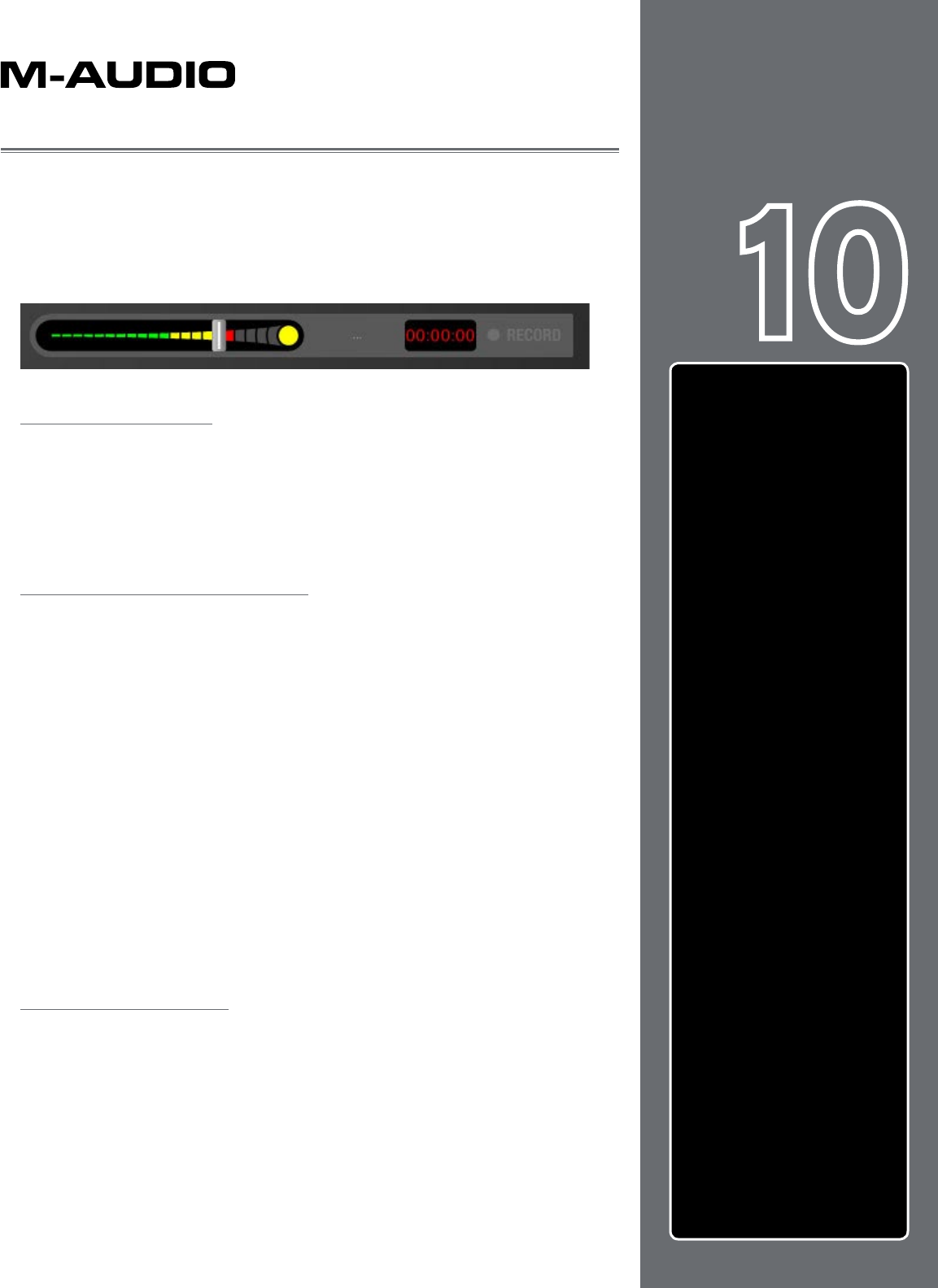
45
Chapter
1
English
45
English
Chapter
10
MASTER OUTPUT
T
he Master Output is the last step in Torq’s audio signal flow before the music
goes out to your audience. It contains a Master Level slider, a Master Level meter,
a Master Limiter, as well as an Audio Recorder. All of these controls are located below
the right Deck in a neat, horizontal arrangement.
Volume Control
As you may assume, the Master Volume slider controls the overall output of Torq’s Main
Outputs. This slider is also used to set the level of the Torq File Recorder (explained
later in this manual). Unlike the Channel Volume faders, the Master Volume slider is on
its side—moving the slider to the right will increase the output volume while moving to
the left will decrease it.
Level Meter and Limiter
The Master Level meter shares the same space as the Master Volume slider. You’ll see
the meter moving behind the slider while music is playing.
Since Torq LE is a digital audio system, it has a limited amount of headroom (dynamic
range). Whenever your mix exceeds the headroom, clipping (distortion) normally
occurs. To prevent this undesired sound, Torq LE features a Limiter on the Master
Output which will keep the Main Outputs from clipping.
Whenever the green circle (located at the right edge of the Master Volume meter) lights,
the Limiter is protecting the system against clipping. It does this by quickly reducing the
volume any time the Master Volume exceeds the maximum headroom. A limiter is not
foolproof, though—you’ll want to be sure that you aren’t triggering the limiter all the time.
If the volume of your mix is too loud, the limiter will reduce the volume all the time, and
this will sound strange. If you find that the green indicator is on most of the time during
your mix, you should turn down the Master Volume slider so your mix doesn’t constantly
peg the limiter. To make up for the reduced volume, turn up the volume on the house
sound system.
Master Recorder
The Master module also includes a Recorder which allows you to record and save your
mix as an audio file as you perform it. You can then take your recorded mix and burn it
onto a CD or distribute it as a podcast, for example.
The process of recording your mix is extremely simple. You start by choosing a name
for your mix and a location on your hard drive for saving it. Then, you mix! When you’re
done, press Stop and your file will be ready to go.
MASTER OUTPUT . . . . . . . . . . 45
Volume Control . . . . . . . . . . . 45
Level Meter and Limiter
. . . . . . 45
Master Recorder
. . . . . . . . . . 45
Filename
. . . . . . . . . . . . 46
Setting the Record Level
. . . 46
Recording
. . . . . . . . . . . 46



